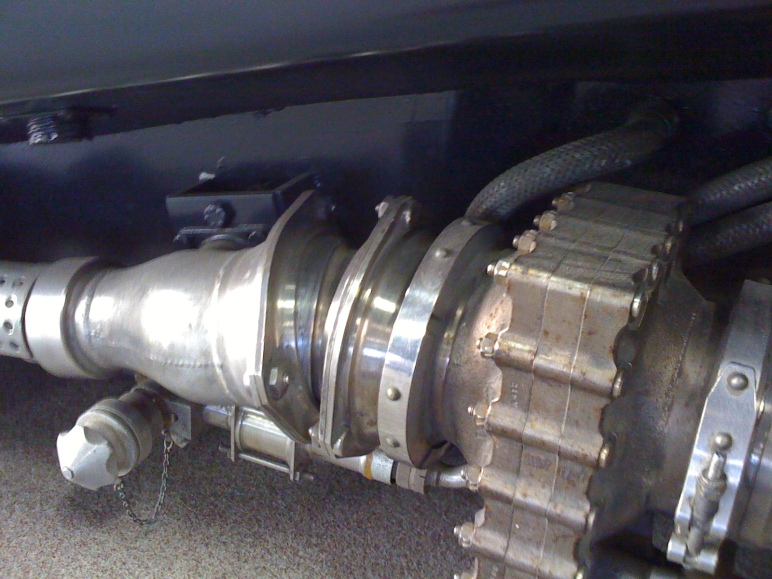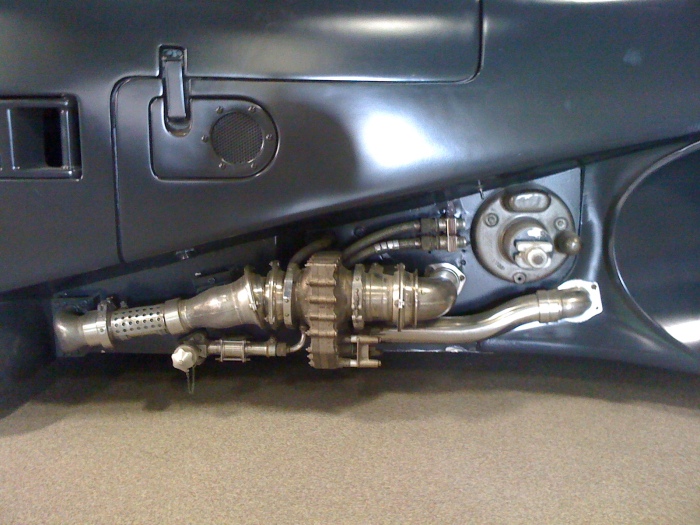The quest to have a screen accurate Batmobile leads you on journey to try and find a set of most difficult to find parts. The parts I’m referring to are the side mechanics that are positioned on the sides of the car near the ground. These are a combination of bends, flanges, valves, faucets and end pieces that seem to have a mysterious origin. Story has it that when they were building the car for the movie they took a trip to an old military aircraft bone yard and started picking out parts that they thought were interesting.
There have been those who have tracked down the origin of many of the parts, but finding something you can get your hands on is next to impossible. Because the likelihood of having real parts is very low, many of us resort to building our own. The downside to this is that the side mechanics are very intricate parts so accurate reproduction is very difficult and it takes forever to fabricate. For those of us in the car building community, an accurate set of side mechanics is the badge of honor for any replica builder.
But with the advances in 3D printing we now have a new alternative to the labor intensive fabrication process which now gives us the ability to create intricate parts with extreme accuracy. Since creating the side donut was such a success I decided to try my hand at 3D modeling the “Holy Grail” of the side mechanics… the hot air valves.
For those of us who are building replica Batmobiles we all know what the hot air valves are, but for everyone else, they are the cast aluminium tall middle part consisting of a front, middle and rear section that the front and rear pipes connect to 🙂
Over the years I collected tons of photos and video of these parts so I had all the reference material I needed. I even had a chance to Skype with a fellow replica Batmobile builder who has spent the last 10+ years tracking down many of the actual parts to get some accurate measurements to make sure things were in proportion. It was pretty funny when we discovered that my “guestimates” in my 3D model almost matched some of the part dimensions perfectly! Nothing like eye-balling it up and having it correct.
The front of the hot air valves have a raised section for the part number nameplates which I had created earlier. The hot air valve is a Teddington part so we made up some new nameplates that were based on some existing ones to try and be as accurate as possible. I have no idea what the rear section little “tower” thingy is supposed to do, but it sure looks cool.
From there it was off to the 3D printer to create the three different sections. All of the sections end up being layered together like a sandwich and then secured by bolts all around the outer perimeter.
Since finishing off the hot air valves I’ve moved on and completed the 3D modeling for the rest of the piping that goes along with them. I’m just waiting to do some test prints on those before blogging more about them. Everything has been designed to slide over/into each other, similar to connecting standard ABS/PVC plumbing pipe. Since the parts are printed using ABS I’ll be able to slide/rotate everything in-place and then glue them together using regular PVC plumbing cement making a sturdy light-weight structure that will be able to take a beating from road debris.
Just like my other Batmobile digital assets I’m also making these STL files available for download. I have a link earlier in this post where you can also grab the details and files needed to take to your local engraver to create the nameplates that stick onto the front of the valve. Once the other pipes have been test printed I’ll be posting their details and STL files as well 🙂












When you make a part from the 3D printer, is it usable? It is hard enough to be on the car and withstand it all?
Absolutely.. I printed them using ABS plastic and as thick as PVC plumbing pipe.. So grab a piece of plumbing pipe from the hardware store and toss it around. It can take a beating 🙂
Looks great Tim, good work.
There are so many 3d printers out there of varying quality. What are you using to generate these?
Cheers
I’ve been using a LulzBot Taz 5